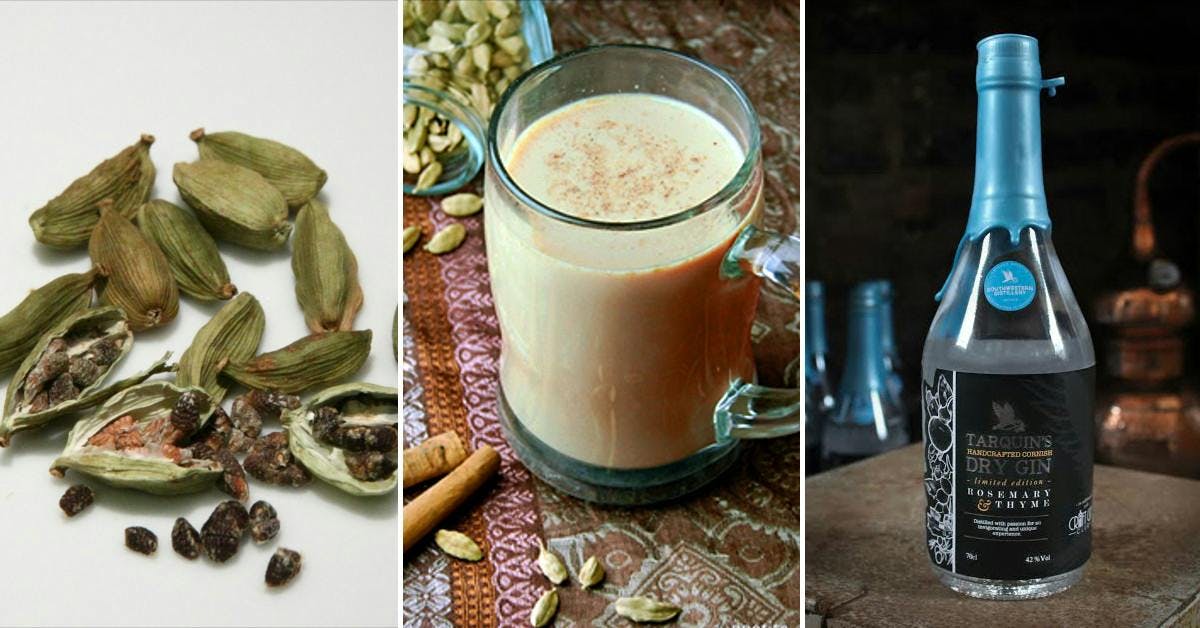
Know Your Botanicals: Cardamom Kashmiri Chai (with added gin)
Traditionally known as the Queen of Spices, cardamom’s use as a gin botanical has been increasing somewhat in recent years, with its distinctive flavour adding a deliciously spicy note to numerous contemporary gins. In fact, it features in our April Gin of the Month, Tarquin's Gin.
There are two main types of cardamom – the black variety is smokier and the more expensive green variety has a fresh minty eucalyptus quality to it. Each type of cardamom is derived from the seeds of plants in two different genera of the Zingiberaceae family.
The green variety (also known as ‘true cardamom’) comes from Elettaria cardamomum and the black from either Amomum costatum and Amomum subulatum.
All these plants are native to India (the largest producer until the late 20th century), Bangladesh, Bhutan, Indonesia, Nepal, and Pakistan.
Indian cardamom was introduced to Guatemala by a German coffee planter before World War One, and in 2000 that country had surpassed India to become the largest producer and exporter of the spice.
Cardamom is used to flavour both food and drink, with both kinds particularly widely used in both sweet and savoury Asian dishes. The green variety, which is the third most expensive spice in the world (after saffron and vanilla), is a common ingredient in Indian cooking – Indian cookery writer Madhur Jaffrey has described it as being to Indians what vanilla is to the West. The spice is also common in sweet Middle Eastern dishes, Nordic baking and also as a flavouring for various teas and coffee.
Individual cardamom seeds are sometimes used a masticatory, being chewed like chewing gum to freshen the breath. It is also used for a variety of purposes by traditional medicine, including tooth infections, digestive disorders and inflammation of the eyelids.
Green cardamom is also used to by people trying to quit smoking as its strong flavour and smell reputedly helps quell cravings.
In Arab countries, cardamom is attributed with aphrodisiac qualities, featuring regularly as such in The Arabian Nights. Given that, you might want to exercise caution when making the recipe below…
Kashmiri Chai
(with optional gin)
1 ½ tablespoons shelled and peeled pistachios (raw or roasted salted)
10 whole green cardamom pods, lightly crushed to remove seeds, pods discarded
1-inch piece of cinnamon stick
Large pinch of saffron threads (15 to 20)
¼ teaspoon freshly grated nutmeg
475mls whole milk
3 tablespoons packed light brown sugar, or to taste
½ teaspoon salt, or to taste
475mls water
4 teaspoons loose-leaf black tea (or 2 teabags)
120mls gin (optional)
METHOD:
Finely grind nuts, cardamom, cinnamon, and saffron with a pestle and mortar, or in a spice grinder. Add nutmeg.
Bring milk to a simmer in a heavy-bottomed saucepan, then whisk in brown sugar, salt and the nut mixture. Heat gently for 3 minute, stirring occasionally.
Meanwhile, bring the water to a boil in a saucepan, then add tea leaves or bags and boil for 1 minute. Pour tea through a fine-mesh sieve into the hot-milk mixture and gently heat the combined chai for a further 1 minute.
Serve the hot chai in tea cups – adding 30mls of gin to each cup, if using.







